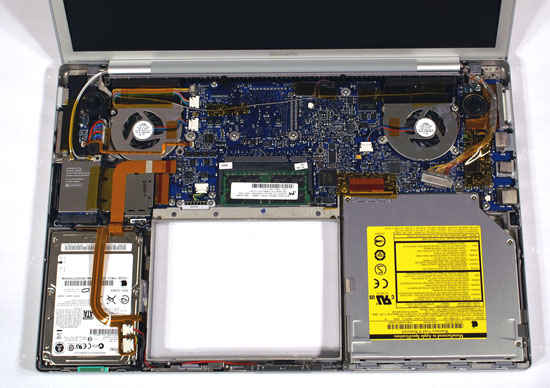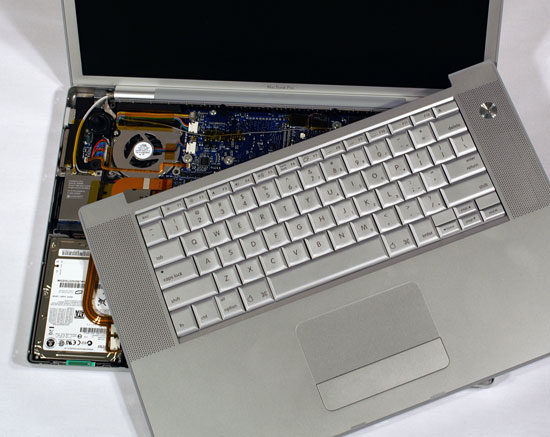Apple's MacBook Pro: Using it as a Mac and a PC
by Anand Lal Shimpi on April 13, 2006 12:00 AM EST- Posted in
- Mac
There are very few configurable options on the MacBook Pro, and the GPU is not one of them. The only GPU Apple offers is the ATI Mobility Radeon X1600; you do however have the ability to choose whether you want 128MB or 256MB of GDDR3 memory. The Mobility Radeon X1600 is a PCI Express GPU, which means that it has a high bandwidth data path to the 945 North Bridge and thus main memory. It sounds good for marketing, but with 128MB or 256MB of local memory the high bandwidth link with system memory isn't all that important.
The old 1280 x 854 panel from my 15" PowerBook G4 has been slightly upgraded to a 1440 x 900 panel. The vertical resolution hasn't been increased much at all but the increase in horizontal resolution is definitely noticeable and appreciated. Although the previous 15" was a good balance between portability and productivity, the 15" MacBook Pro improves on the balance even more thanks to its slightly higher resolution panel. I will say that the uniformity of the brightness of the panel doesn't seem to be as good as on my previous PowerBook; the panel does seem to get darker around the corners than the old panel. Obviously at different resolutions the two aren't necessarily comparable, but I wouldn't call the new panel a huge step forward. It's not bad by any means, but the brightness uniformity was one of the first things I noticed about it.
Just like its predecessor, the MacBook Pro features an integrated DVI output port, while also coming with a DVI-to-VGA dongle if you're connecting your notebook to a VGA display. An improvement over its predecessor is that its DVI output is dual link, meaning it can drive Apple's 30" Cinema Display and Dell's 3007WFP at their native resolution of 2560 x 1600.
The integrated 56K modem is finally gone from the old PowerBook's chassis, although Apple offers an optional USB modem if you absolutely need one.

The MacBook Pro's very tiny motherboard (Click to Enlarge)
For hard drives you can choose between 80GB and 120GB drives, all spinning at 5400RPM, with a single 100GB offering at 7200RPM as an option for added performance. At present, the largest laptop hard drives anywhere are only 160GB, so there's not much incentive to upgrade today. However, if you'd like to upgrade to a bigger hard drive down the road, it's not too difficult to do. Opening the MacBook Pro simply requires a small phillips head screwdriver and a T6 driver; remove all the screws along the outside and underneath the unit and you'll be able to lift out the keyboard.

Beneath the keyboard you'll see the hard drive, which after some careful disconnecting of cables can be removed.











52 Comments
View All Comments
user31415 - Monday, September 26, 2016 - link
What are the unities of the 0.3 performance per Watt (please mention is on your article)user31415 - Monday, September 26, 2016 - link
*unity